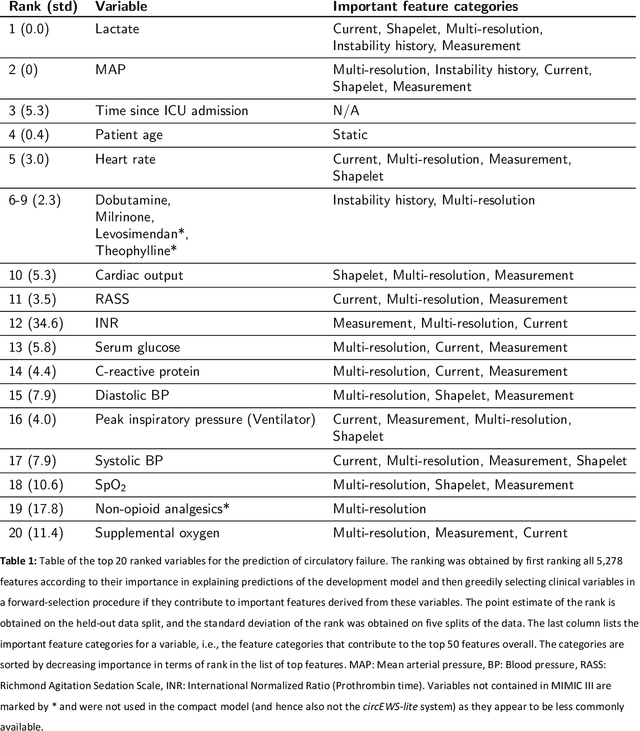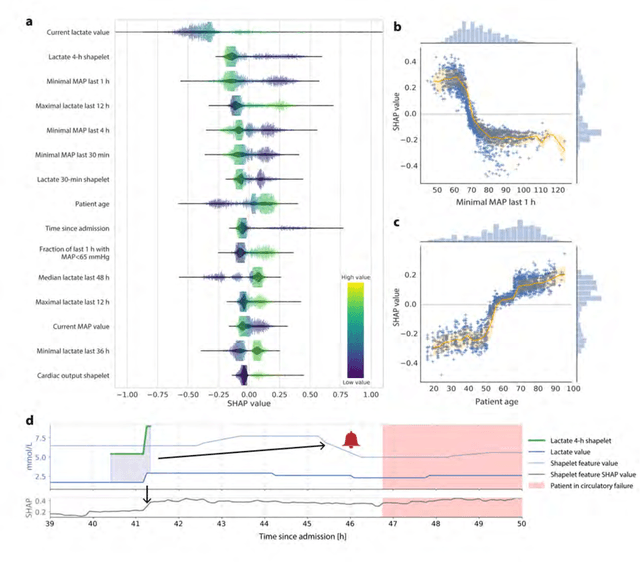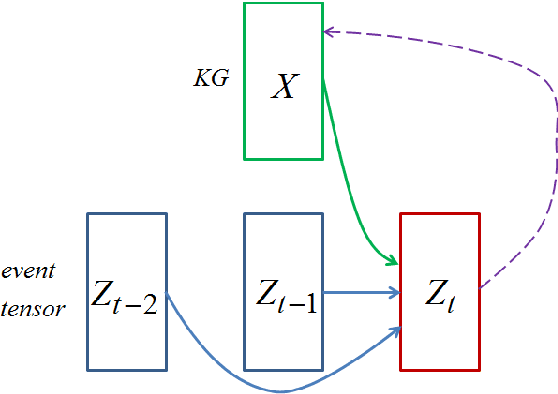Cristóbal Esteban
Machine learning for early prediction of circulatory failure in the intensive care unit
Apr 19, 2019



Abstract:Intensive care clinicians are presented with large quantities of patient information and measurements from a multitude of monitoring systems. The limited ability of humans to process such complex information hinders physicians to readily recognize and act on early signs of patient deterioration. We used machine learning to develop an early warning system for circulatory failure based on a high-resolution ICU database with 240 patient years of data. This automatic system predicts 90.0% of circulatory failure events (prevalence 3.1%), with 81.8% identified more than two hours in advance, resulting in an area under the receiver operating characteristic curve of 94.0% and area under the precision-recall curve of 63.0%. The model was externally validated in a large independent patient cohort.
Real-valued (Medical) Time Series Generation with Recurrent Conditional GANs
Dec 04, 2017



Abstract:Generative Adversarial Networks (GANs) have shown remarkable success as a framework for training models to produce realistic-looking data. In this work, we propose a Recurrent GAN (RGAN) and Recurrent Conditional GAN (RCGAN) to produce realistic real-valued multi-dimensional time series, with an emphasis on their application to medical data. RGANs make use of recurrent neural networks in the generator and the discriminator. In the case of RCGANs, both of these RNNs are conditioned on auxiliary information. We demonstrate our models in a set of toy datasets, where we show visually and quantitatively (using sample likelihood and maximum mean discrepancy) that they can successfully generate realistic time-series. We also describe novel evaluation methods for GANs, where we generate a synthetic labelled training dataset, and evaluate on a real test set the performance of a model trained on the synthetic data, and vice-versa. We illustrate with these metrics that RCGANs can generate time-series data useful for supervised training, with only minor degradation in performance on real test data. This is demonstrated on digit classification from 'serialised' MNIST and by training an early warning system on a medical dataset of 17,000 patients from an intensive care unit. We further discuss and analyse the privacy concerns that may arise when using RCGANs to generate realistic synthetic medical time series data.
Predicting Clinical Events by Combining Static and Dynamic Information Using Recurrent Neural Networks
Nov 17, 2016



Abstract:In clinical data sets we often find static information (e.g. patient gender, blood type, etc.) combined with sequences of data that are recorded during multiple hospital visits (e.g. medications prescribed, tests performed, etc.). Recurrent Neural Networks (RNNs) have proven to be very successful for modelling sequences of data in many areas of Machine Learning. In this work we present an approach based on RNNs, specifically designed for the clinical domain, that combines static and dynamic information in order to predict future events. We work with a database collected in the Charit\'{e} Hospital in Berlin that contains complete information concerning patients that underwent a kidney transplantation. After the transplantation three main endpoints can occur: rejection of the kidney, loss of the kidney and death of the patient. Our goal is to predict, based on information recorded in the Electronic Health Record of each patient, whether any of those endpoints will occur within the next six or twelve months after each visit to the clinic. We compared different types of RNNs that we developed for this work, with a model based on a Feedforward Neural Network and a Logistic Regression model. We found that the RNN that we developed based on Gated Recurrent Units provides the best performance for this task. We also used the same models for a second task, i.e., next event prediction, and found that here the model based on a Feedforward Neural Network outperformed the other models. Our hypothesis is that long-term dependencies are not as relevant in this task.
Learning with Memory Embeddings
May 07, 2016



Abstract:Embedding learning, a.k.a. representation learning, has been shown to be able to model large-scale semantic knowledge graphs. A key concept is a mapping of the knowledge graph to a tensor representation whose entries are predicted by models using latent representations of generalized entities. Latent variable models are well suited to deal with the high dimensionality and sparsity of typical knowledge graphs. In recent publications the embedding models were extended to also consider time evolutions, time patterns and subsymbolic representations. In this paper we map embedding models, which were developed purely as solutions to technical problems for modelling temporal knowledge graphs, to various cognitive memory functions, in particular to semantic and concept memory, episodic memory, sensory memory, short-term memory, and working memory. We discuss learning, query answering, the path from sensory input to semantic decoding, and the relationship between episodic memory and semantic memory. We introduce a number of hypotheses on human memory that can be derived from the developed mathematical models.
Predicting the Co-Evolution of Event and Knowledge Graphs
Dec 21, 2015



Abstract:Embedding learning, a.k.a. representation learning, has been shown to be able to model large-scale semantic knowledge graphs. A key concept is a mapping of the knowledge graph to a tensor representation whose entries are predicted by models using latent representations of generalized entities. Knowledge graphs are typically treated as static: A knowledge graph grows more links when more facts become available but the ground truth values associated with links is considered time invariant. In this paper we address the issue of knowledge graphs where triple states depend on time. We assume that changes in the knowledge graph always arrive in form of events, in the sense that the events are the gateway to the knowledge graph. We train an event prediction model which uses both knowledge graph background information and information on recent events. By predicting future events, we also predict likely changes in the knowledge graph and thus obtain a model for the evolution of the knowledge graph as well. Our experiments demonstrate that our approach performs well in a clinical application, a recommendation engine and a sensor network application.
 Add to Chrome
Add to Chrome Add to Firefox
Add to Firefox Add to Edge
Add to Edge